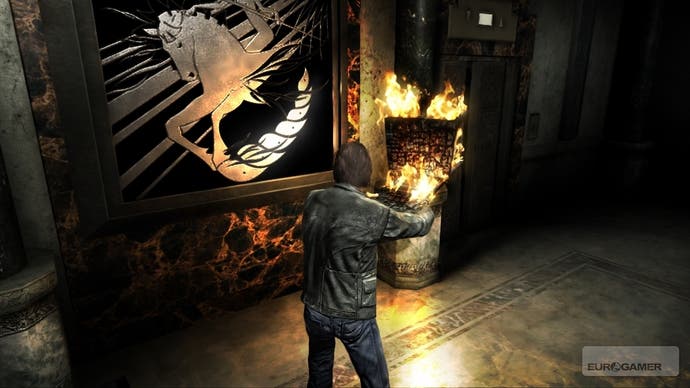Alone in the Dark: Inferno
Horrifying or just horrible?
No publisher wants the phrase "polishing a turd" attached to their games as they cross the console divide, but Atari has at least been open about the need to spruce up Alone in the Dark before introducing it to anyone else. A new audience should represent new opportunities, but there's no denying that the well-publicised flaws in the 360 original mean that Edward Carnby's fifth outing arrives in Sonyville tainted by poor word of mouth and with much to prove.
Now in possession of a near-complete PS3 build of the game, and able to explore it away from the guiding hands of the development team, we can perhaps give you a clearer picture of which elements have been improved - and which are still looking a bit shabby.
Central to Alone in the Dark's overhaul is the most basic element of all - moving around. 360 players were saddled with a system so clumsy and awkward that it made simply navigating the environment an uphill struggle, even when you weren't actually struggling up a hill. A bizarre mixture of fixed camera angles, extreme close-ups and lurching viewpoints, it's no exaggeration to say that it was one of the worst combinations of camera and control in a major release this year.
Thankfully, it has been completely ditched for the PS3 and replaced with a more traditional over-the-shoulder third-person action viewpoint, with manual camera control. The need to press an additional button to make Edward run has also been tossed aside, with a far more sensible analogue system in place that changes his speed depending on how far you push the stick. Just like you'd expect, really, which is why so many found the original control scheme such a fumble.

Playing the PS3 version alongside the 360 (well, flipping between them with the remote control) the change is immediately apparent and overwhelmingly beneficial. It's still not the slickest control scheme in gaming as precision movements and jumps still feel a little hit and miss compared to the leading lights of the genre but you can, at least, see where you're going and control your movements in ways that make sense. It also seems that the controls in the first-person view have been tightened up. Turning feels much smoother and, while it won't be troubling the leading FPS games, it's now much easier to target the skittering monsters.
In fact, combat in general is much easier, with a noticeable drop in bludgeoning across the board. Fire is still the quickest way to dispatch enemies, but in situations where brute strength is the only way to fend them off while you search for a permanent solution it takes far fewer hits to knock them down. It's easier, yes, but mostly it makes combat less boring. Swinging away with a chair at an enemy soon stops being exciting, and the game now seems to realise that players would rather deal with foes and move on than be constantly hampered by mindless slugging matches. This is good.








